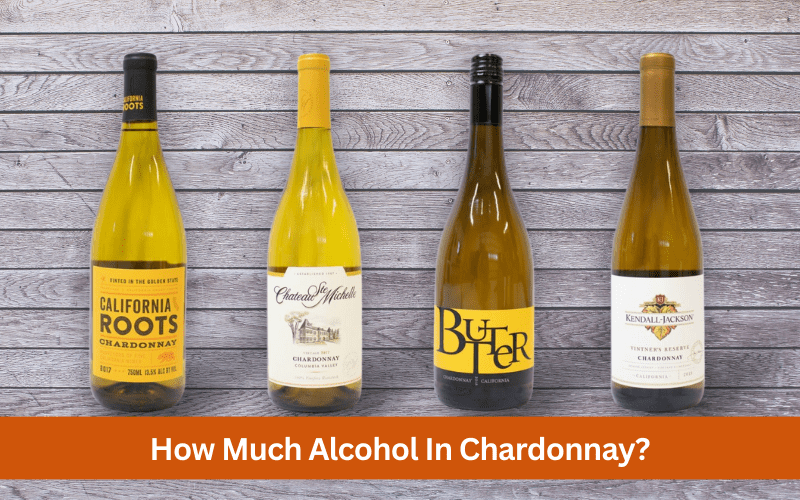How much alcohol in Chardonnay? It’s a question that often arises in the minds of wine enthusiasts and curious novices alike. As a wine lover who has embarked on a personal journey to explore the intricate world of Chardonnay, I’ve found myself captivated by the mystery surrounding its alcohol content. From crisp and refreshing to rich and buttery, Chardonnay comes in various styles, and its alcohol levels play a crucial role in shaping its flavor profile. Join me as we delve into the depths of how much alcohol in Chardonnay, unraveling the secrets hidden within each sip and discovering the factors that contribute to this enigmatic aspect of one of the world’s most beloved white wines.
Does Chardonnay have alcohol?
Yes, Chardonnay does contain alcohol. As with all wines, Chardonnay undergoes a fermentation process where yeast converts the sugars present in the grapes into alcohol. The alcohol content in Chardonnay, like other wines, can vary depending on factors.
However, it is important to note that Chardonnay is generally recognized as a white wine with moderate alcohol levels, typically falling within a certain range. The alcohol content plays a role in shaping the wine’s flavor profile and can impact its body, texture, and perceived sweetness.
So, how much alcohol in Chardonnay? Let’s find out next!
How much alcohol does Chardonnay have?
How much alcohol in Chardonnay? Chardonnay typically contains 13.5 to 14.5 percent alcohol by volume (ABV). The alcohol content of Chardonnay falls within this range, although variations can occur due to factors like grape ripeness, winemaking techniques, and regional influences.
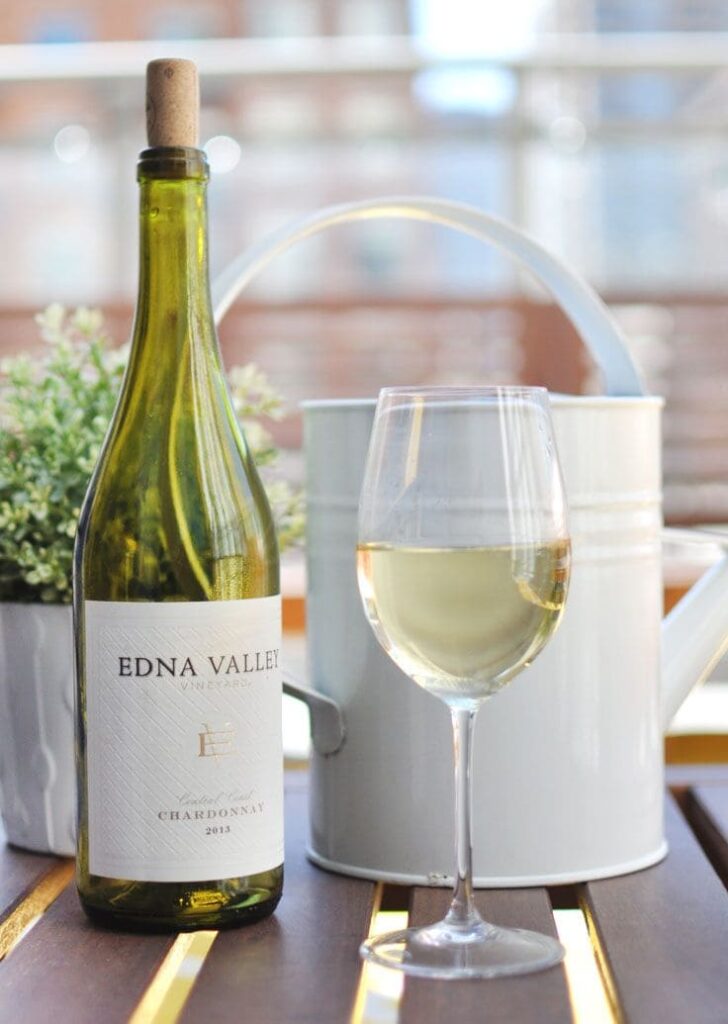
How much alcohol is in Chardonnay wine: Different Types and Brands
When it comes to Chardonnay wine, the alcohol content can vary among different types and brands. Here are many different alcohol contents of many types and brands:
How much alcohol is in Woodbridge Chardonnay?
The alcohol content in Woodbridge Chardonnay is usually around 13.5% ABV. However, it’s important to check the specific bottle or contact the producer for the most accurate and up-to-date information as alcohol content can vary slightly across vintages.
How much alcohol in Chardonnay Beringer?
Beringer Chardonnay also has an ABV of 13.5%. Beringer is recognized for producing a range of Chardonnay styles, from vibrant and fruit-forward to more complex and oak-aged expressions. Their wines often showcase notes of citrus, tropical fruits, and vanilla, with a smooth mouthfeel and well-integrated oak character.
How much alcohol in Chardonnay Rombauer?
Rombauer Chardonnay is renowned for its rich and buttery style. The alcohol content in their Chardonnay wines is typically around 14.5 percent ABV.
How much alcohol in Chardonnay Cakebread Cellars?
Cakebread Cellars Chardonnay has an ABV of 14.2%. Renowned for their high-quality wines, Cakebread Cellars crafts Chardonnays that offer a balance between fruitiness and complexity. Their wines often display flavors of apple, pear, and citrus, complemented by subtle oak influences and a lingering finish.
How much alcohol in Chardonnay La Crema?
La Crema Chardonnay typically has an ABV of 13.5%. La Crema is known for producing elegant and well-structured Chardonnays. Their wines often showcase vibrant fruit flavors, such as lemon, apple, and stone fruits, along with a creamy texture and a hint of toasty oak, resulting in a harmonious and enjoyable drinking experience.
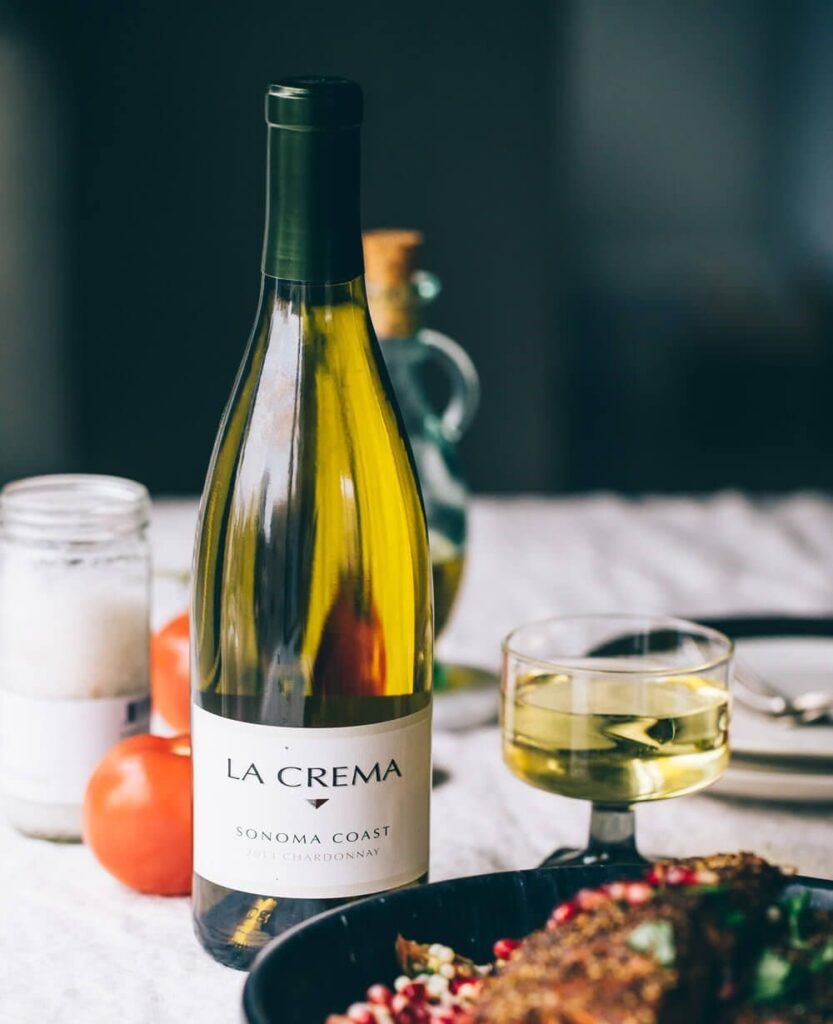
How much alcohol in Chardonnay Sonoma-Cutrer?
Sonoma-Cutrer Chardonnay has an ABV of 13.9%. Specializing in cool-climate Chardonnay from Sonoma County, Sonoma-Cutrer produces wines with bright acidity and refined flavors. Their Chardonnays often exhibit citrus and orchard fruit notes, balanced by a subtle minerality and judicious oak integration.
How much alcohol in Chardonnay Louis Jadot?
Louis Jadot Chardonnay has an ABV of 12.5%. Hailing from Burgundy, France, Louis Jadot is renowned for producing traditional and terroir-driven Chardonnays. Their wines typically showcase crisp acidity, delicate fruit flavors, and a mineral character, with subtle oak influences playing a supporting role.
How much alcohol in Chardonnay Robert Mondavi?
Robert Mondavi Chardonnay typically has an ABV of 13.5%. As one of the pioneering wineries in California, Robert Mondavi offers Chardonnays that balance fruitiness, complexity, and oak integration. Their wines often display flavors of tropical fruits, apple, and vanilla, with a smooth texture and a touch of toasty oak.
How much alcohol in Chardonnay Chateau Montelena?
Chateau Montelena Chardonnay has an ABV of 14.1%. Known for their age-worthy Chardonnays, Chateau Montelena produces wines with depth and structure. Their Chardonnays often exhibit flavors of green apple, citrus, and a hint of spice, supported by a firm acidity and a touch of oak, resulting in a well-balanced and cellar-worthy wine.
How much alcohol in Chardonnay Far Niente?
Far Niente Chardonnay has an ABV of 14.3%. Highly regarded for their premium Chardonnays, Far Niente crafts wines with elegance and complexity. Their Chardonnays often showcase flavors of tropical fruits, citrus, and baking spices, along with a rich, creamy texture and well-integrated oak nuances, resulting in a luxurious and opulent wine.
How much alcohol is in Barefoot chardonnay?
The alcohol content in Barefoot Chardonnay typically ranges from 12.5% to 13.5% ABV. Please note that slight variations may occur across different vintages.
How much alcohol in Chardonnay Kendall-Jackson?
Kendall-Jackson Chardonnay typically has an alcohol by volume (ABV) of 13.5%. Known for their consistent quality, Kendall-Jackson produces Chardonnay with balanced flavors of ripe fruits, vanilla, and subtle oak. Their wines often exhibit a creamy texture and a crisp acidity, making them popular choices among Chardonnay enthusiasts.
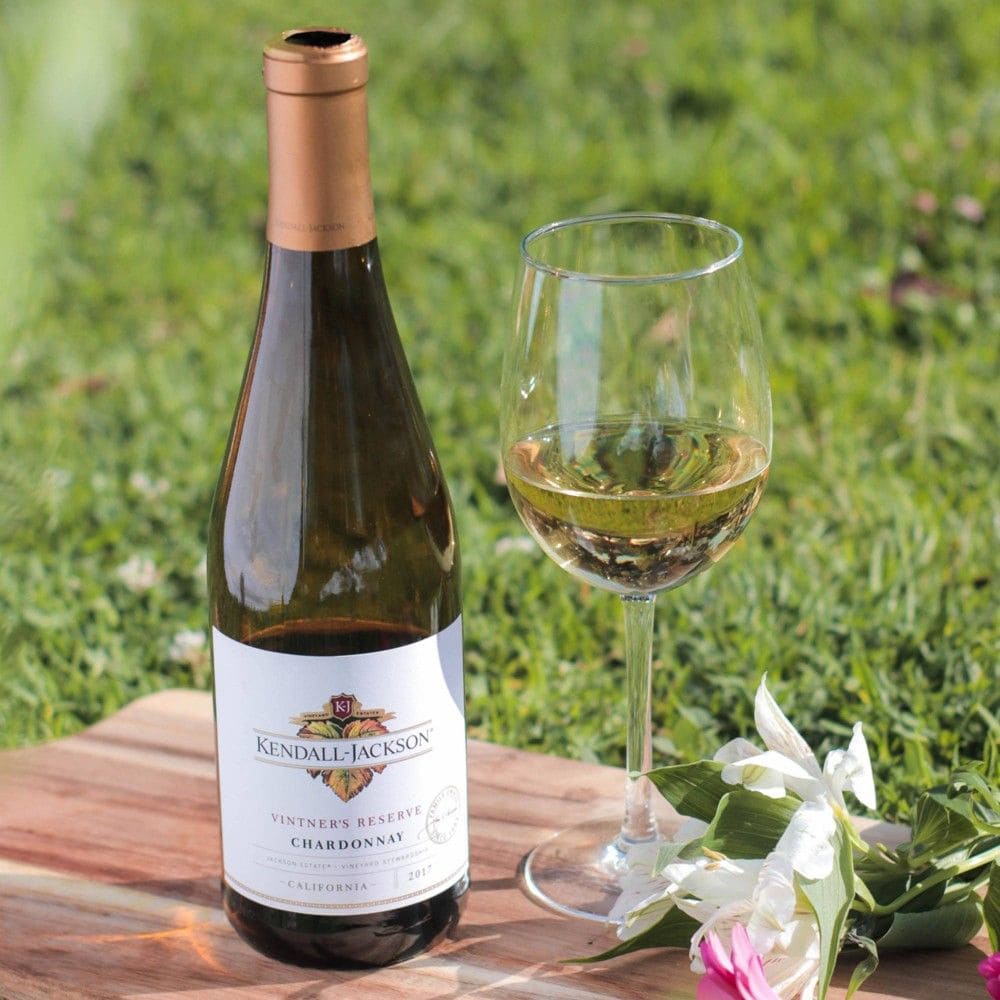
Which brand of Chardonnay has the least and the most alcohol?
The brand of Chardonnay with the least alcohol content can vary, as different producers offer varying styles and ABV ranges. However, some Chardonnay wines known for their lower alcohol content include:
- Louis Jadot Chardonnay: Louis Jadot Chardonnay tends to have a lower alcohol content, often around 12.5% ABV.
- La Crema Chardonnay: La Crema Chardonnay typically falls within a moderate alcohol range, around 13.5% ABV, which can be considered relatively lower compared to some other Chardonnay brands.
On the other hand, Chardonnay wines with higher alcohol content can also vary, but some examples of brands known for their higher ABV include:
- Far Niente Chardonnay: Far Niente Chardonnay is recognized for its richer, fuller-bodied style, often with a higher alcohol content. It can range around 14% ABV or higher.
- Rombauer Chardonnay: Rombauer Chardonnay is renowned for its lush, full-bodied character, which can be associated with a higher alcohol content. Specific ABV percentages may vary across different vintages but can often exceed 14% ABV.
Please note that alcohol content can vary among different releases and vintages, so it’s always advisable to check the specific bottle or contact the producer for precise information on alcohol levels.
Factors affecting how much alcohol is in Chardonnay
Several factors can influence the alcohol content in Chardonnay. These factors include:
- Grape Ripeness: The ripeness level of the grapes at the time of harvest significantly affects the sugar content in the grapes. Riper grapes tend to have higher sugar levels, which can lead to higher alcohol content in the resulting wine.
- Climate and Terroir: The climate and terroir of the vineyard play a crucial role in grape development. Warmer climates tend to yield grapes with higher sugar levels, potentially resulting in wines with higher alcohol content. Conversely, cooler climates may produce grapes with lower sugar levels and, consequently, lower alcohol content.
- Winemaking Techniques: Winemakers have control over various techniques during the winemaking process that can impact alcohol levels. Factors such as fermentation temperature, yeast selection, and fermentation duration can influence how much sugar is converted into alcohol.
- Chaptalization: Chaptalization is the process of adding sugar to the grape must before fermentation to increase the potential alcohol content. This technique is used in regions with cooler climates or when the grapes’ sugar levels are insufficient for desired alcohol levels.
- Blending: Winemakers can blend different lots or varieties of Chardonnay to achieve the desired alcohol levels. By blending wines with varying alcohol content, winemakers can harmonize the final alcohol level in the Chardonnay blend.
- Winemaker Preferences: Winemakers have their own stylistic preferences, and some may intentionally aim for higher or lower alcohol levels in their Chardonnay wines based on their desired flavor profiles and market preferences.
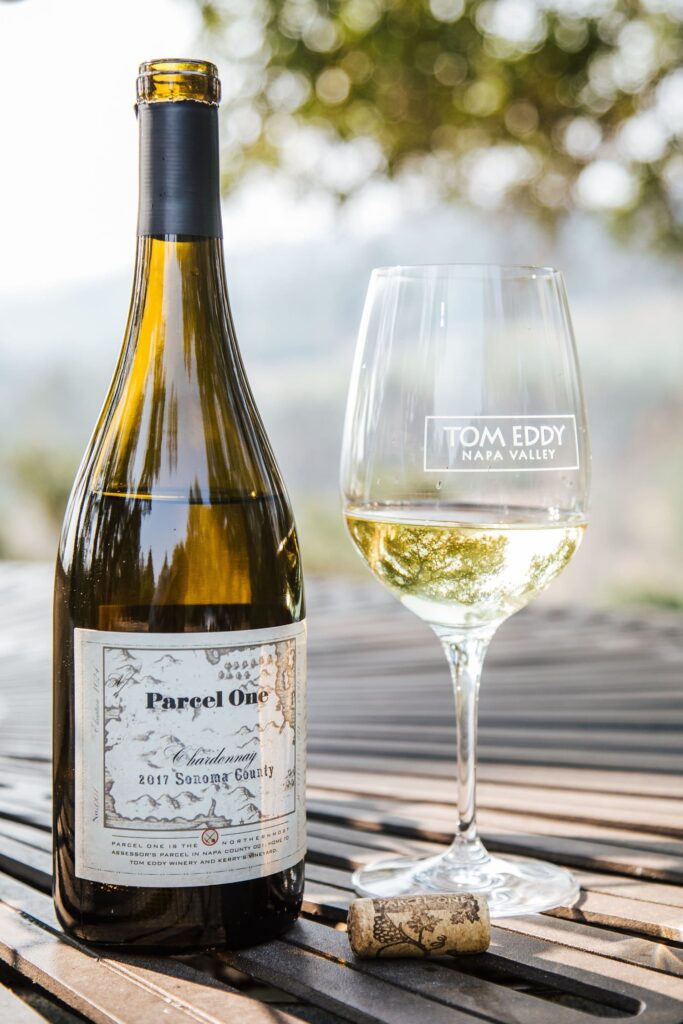
Chardonnay alcohol content and flavor profile
The alcohol content of Chardonnay can have a significant impact on its flavor profile. Typically, Chardonnay wines have an alcohol by volume (ABV) ranging from 13.5% to 14.5%. Here’s how alcohol content relates to Chardonnay’s flavor profile:
- Body and Texture: The alcohol content contributes to Chardonnay’s body and texture. Higher alcohol levels can result in a fuller-bodied wine with a richer mouthfeel, while lower alcohol levels can lead to a lighter-bodied wine with a more delicate texture.
- Fruitiness: Alcohol can enhance the perception of fruit flavors in Chardonnay. Higher alcohol levels may intensify the expression of ripe fruit characteristics such as tropical fruits, stone fruits, and citrus notes.
- Sweetness Perception: Alcohol can influence the perception of sweetness in Chardonnay. Higher alcohol levels can create a perception of slight sweetness in the wine, even if the wine is technically dry. This can contribute to a rounder and more luscious mouthfeel.
- Balance with Acidity: Chardonnay’s acidity plays a crucial role in its flavor profile, and alcohol content interacts with acidity to create balance. Higher alcohol levels need to be balanced with sufficient acidity to prevent the wine from feeling overly heavy or cloying.
- Oak Influence: Chardonnay wines often undergo oak aging, which can impart additional flavors and aromas such as vanilla, toast, and spice. Alcohol can help integrate these oak-derived characteristics into the wine, adding complexity and depth to the flavor profile.
How much alcohol in Chardonnay compared to other types of wine
| Wine Type | Alcohol Content Range (ABV) |
| Chardonnay | 13.5% – 14.5% |
| Sauvignon Blanc | 12.5% – 14% |
| Riesling | 12% |
| Pinot Grigio/Pinot Gris | 11% – 14% |
| Cabernet Sauvignon | 13.5% – 14.5% |
| Merlot | 13% – 14% |
| Syrah/Shiraz | 13% – 15% |
| Pinot Noir | 12% – 15% |
| Zinfandel | 13% – 17% |
| Sparkling Wine | 12% – 12.5% |
| Port | 16% – 20% |
Winemaking process for Chardonnay
The winemaking process for Chardonnay involves several key steps, including:
- Harvesting: The process begins with the careful harvesting of Chardonnay grapes. The grapes are typically hand-picked to ensure the best quality.
- Crushing and Pressing: Once harvested, the grapes are crushed to release their juice. The juice, along with the grape skins and seeds, is then transferred to a press where gentle pressure is applied to extract the juice while minimizing extraction of harsh tannins.
- Fermentation: The extracted grape juice, also known as “must,” is transferred to fermentation vessels, which can be stainless steel tanks, oak barrels, or a combination of both. Yeast is added to the must to initiate fermentation. The yeast consumes the grape sugars, converting them into alcohol and carbon dioxide. This process typically takes a few weeks to complete.
- Aging and Maturation: After primary fermentation, some winemakers choose to age their Chardonnay in oak barrels. This can add additional flavors, complexity, and texture to the wine. The aging process can last from a few months to several years, depending on the desired style and characteristics of the wine.
- Malolactic Fermentation (Optional): Some Chardonnays undergo malolactic fermentation, a secondary fermentation process where harsh malic acid is converted into softer lactic acid. This process can contribute to a creamier texture and buttery flavors in the wine.
- Clarification and Filtration: To remove any remaining sediment or solids, the wine undergoes clarification processes such as fining and filtration. This helps to improve the wine’s clarity and stability.
- Blending (Optional): In some cases, winemakers may choose to blend Chardonnay from different vineyard sites or barrel lots to achieve the desired flavor profile and balance.
- Bottling: Once the winemaking process is complete, the Chardonnay wine is bottled and sealed, ready for distribution and aging in the bottle.
It’s necessary to know that specific winemaking techniques and variations can differ among winemakers and regions, resulting in a diverse range of Chardonnay styles and flavors.
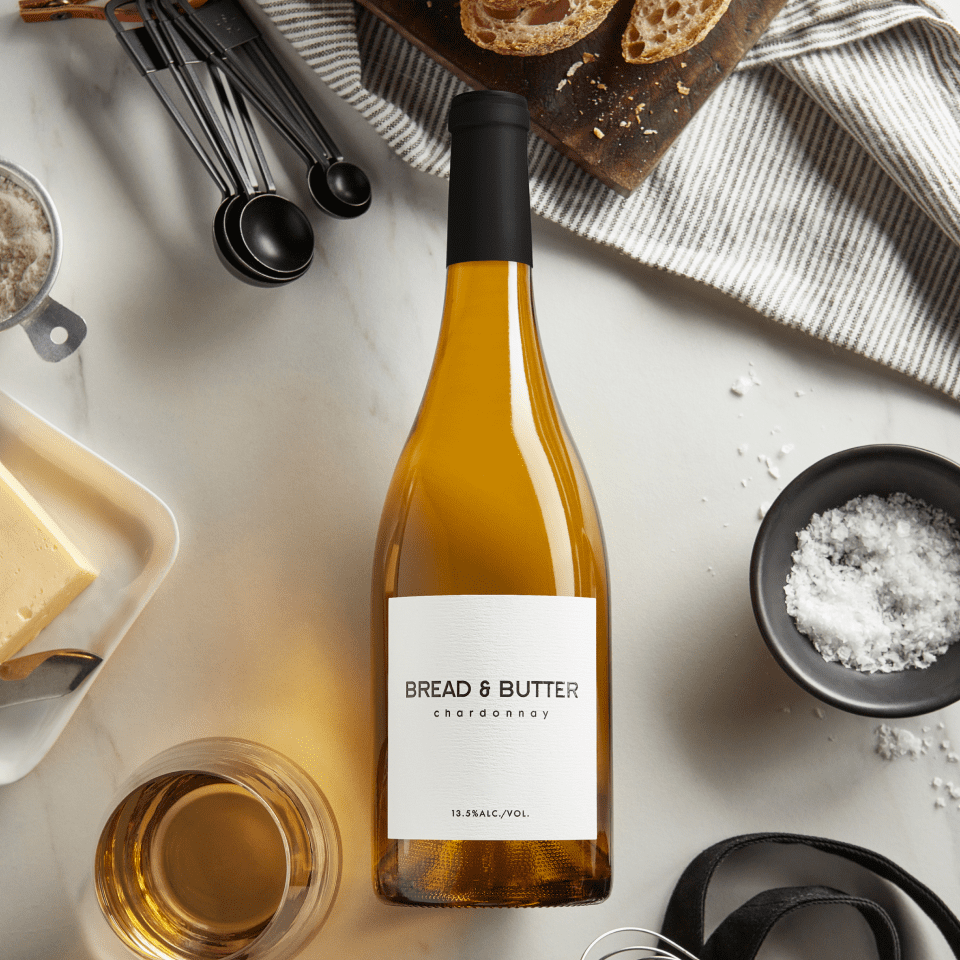
Is Chardonnay a strong wine?
Chardonnay is not typically considered a “strong” wine in terms of its alcohol content. The alcohol content of Chardonnay usually falls within the moderate range, with typical ABV (alcohol by volume) ranging from 13.5% to 14.5%. This places it in line with many other white wines and does not classify it as particularly high or strong in terms of alcohol.
Does Chardonnay get you drunk?
The potential for Chardonnay, or any alcoholic beverage, to make you feel intoxicated depends on several factors. Consumption of Chardonnay, like any other alcoholic beverage, can lead to intoxication if consumed in significant quantities or at a fast pace. The alcohol content in Chardonnay typically ranges from 13.5% to 14.5% ABV, which is within the average range for many wines.
But, the rate at which alcohol affects individuals can vary based on factors such as body weight, metabolism, tolerance, and how much is consumed.
It is crucial to consume alcohol responsibly, be aware of your personal limits, and consider the potential effects on your body and well-being.
How much Chardonnay to get drunk?
On average, men typically need to consume approximately 3 glasses of Chardonnay within an hour to reach a level of intoxication. In contrast, women may reach the same level of intoxication by consuming around 2 glasses of Chardonnay within the same time frame.
FAQs
Does all Chardonnay have the same alcohol content?
No, the alcohol content in Chardonnay can vary depending on factors such as grape ripeness, winemaking techniques, and regional influences. Typically, Chardonnay has an alcohol by volume (ABV) ranging from 13.5% to 14.5%, but variations exist among different producers and vintages.
Are higher alcohol Chardonnays better quality?
The quality of a Chardonnay wine is not solely determined by its alcohol content. Quality is subjective and can depend on various factors such as grape quality, winemaking techniques, and individual preferences. Higher alcohol Chardonnays are not inherently better or worse than those with lower alcohol content; it ultimately comes down to personal taste and the overall balance of flavors and characteristics.
Can you reduce alcohol content in Chardonnay?
Yes, winemakers have techniques to reduce alcohol content in Chardonnay. One method is using reverse osmosis, which selectively removes alcohol while preserving other components. However, this process is not commonly employed as it may impact the wine’s overall flavor profile and balance.
How does alcohol affect the aging potential of Chardonnay?
Alcohol content can influence the aging potential of Chardonnay. Wines with higher alcohol levels may have greater aging potential due to their higher extractability of phenolic compounds. However, aging potential is also influenced by factors like acidity, sugar, and tannin levels, as well as the specific winemaking and storage conditions.
Who drinks Chardonnay?
Chardonnay enjoys a broad consumer base. It is popular among wine enthusiasts of all levels of experience and is appreciated by a wide range of individuals who enjoy its diverse styles, flavors, and food-pairing versatility.
Is Chardonnay a suitable wine for beginners?
Yes, Chardonnay is often recommended as a suitable wine for beginners due to its approachable and versatile nature. Its range of styles allows beginners to explore different flavor profiles, from crisp and unoaked to fuller-bodied and oak-aged Chardonnays, helping them develop their wine preferences.
What percentage is wine usually?
Wine usually has an alcohol by volume (ABV) ranging from 11% to 15%, depending on the grape variety, winemaking style, and regional regulations. However, specific wine percentages can vary widely, including fortified wines like Port or dessert wines with higher alcohol content.
Does Chardonnay get you drunk fast?
The rate at which Chardonnay or any alcoholic beverage affects individuals depends on various factors, including alcohol content, consumption pace, body weight, metabolism, tolerance, and other individual characteristics. Drinking Chardonnay or any wine responsibly and in moderation is advised to avoid excessive alcohol consumption and its potential effects.
When should Chardonnay be drunk?
Chardonnay can be enjoyed at different stages of its development. Young Chardonnays are often crisp and vibrant, showcasing primary fruit flavors. Aged Chardonnays can develop more complex flavors, such as nuttiness or honeyed notes. The choice depends on personal preference, but Chardonnays are generally consumed within a few years of release, although some high-quality examples can age for longer.
What is the best way to drink Chardonnay?
Chardonnay is best served chilled but not overly cold to allow its flavors and aromas to fully express. Use a tulip-shaped white wine glass to concentrate the aromas. Consider pairing it with foods that complement its characteristics, such as poultry, seafood, creamy sauces, and soft cheeses. Ultimately, the best way to drink Chardonnay is the way you enjoy it most, whether sipping it on its own or pairing it with delicious cuisine.
Conclusion
Understanding how much alcohol in Chardonnay is a fascinating journey that unveils the intricate relationship between winemaking and flavor profiles. Throughout this exploration, I have come to appreciate the delicate balance between ripeness, terroir, and winemaking techniques that contribute to the alcohol content in Chardonnay. By delving into the world of Chardonnay and its alcohol content, we not only deepen our understanding of this beloved white wine but also gain a greater appreciation for the artistry and science behind winemaking. So, whenever you uncork a bottle of Chardonnay, take a moment to savor its unique flavors and consider the intricate dance between the grape, the terroir, and the winemaker’s choices that determine just how much alcohol is in Chardonnay wine.
I’m Chen Mina, from Vol de Nuit, who has a special passion for bartending, especially mixing wine, beer, and cooktail. Here you will find content about alcoholic beverages, I will bring you knowledge that few people know about this drink.

